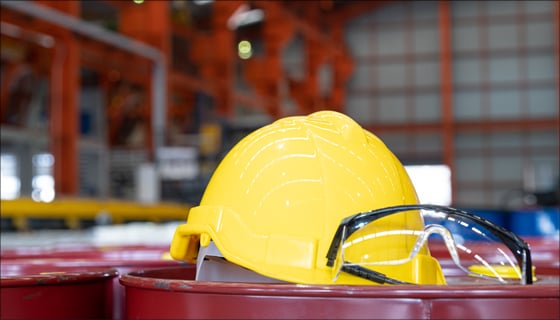
A Kilometer-Long Stroll into the Past
I’ve been fortunate to have walked the kilometer-long Sydney Harbour Bridge and to look up and see the amazing steel structure, a fusion of art and practicality. It is world-famous, and an enduring symbol of Australia. The Coathanger allows more than 150,000 vehicles a day to cross its amazing span, along with rail, pedestrian and bicycle traffic.
It is not just a monument; it is a testament to humankind’s ingenuity, creativity, and hard work. Thousands of people built this bridge – quarrying granite to build the pylons, transporting materials, preparing the harbour, connecting the steel beams rivet by rivet, pouring concrete for the roadway.
Construction began more than a century ago, and like many iconic structures built during those times, there was an inestimable cost. Sixteen men died in the quarries and the bridge during construction while countless others sustained serious injuries.
There are still very risky jobs in Australia and New Zealand. Jobs in agriculture, forestry, and fishing—along with those in transport, postal services, warehousing, and construction—are consistently ranked among the most dangerous occupations.
Safety and Prevention and a Shift in the Workforce
While no less risky than the jobs of 100 years ago, the major difference in work today is safety and prevention.
Workers in high-risk occupations benefit from harnesses, gloves, masks, steel-toed boots, and helmets, as well as safety mechanisms on machinery. These help to prevent and mitigate traumatic injuries, and cumulative injury is minimised by such aids as ear protection, cordless tools, and ergonomics. Furthermore, workers today are trained in and practice safety so that the work is performed with minimum risk of injury to themselves or others.
Behind all of this are modern healthcare systems providing top-notch care from hospitals to rehabilitation clinics.
The shift in today’s workforce is also significant. While labourers and tradespeople represent one-quarter of workers in Australia and New Zealand, there are now more professional, manager, and clerical roles overall, representing more than half of all workers.
Work itself is almost unimaginable from 50 years ago. This significant shift has been driven by computers. Mobile devices are used by everyone in society, and every product made – from televisions to cars to washing machines – is infused with technology.
The traditional workplace of cubicles or warehouses has been supplanted by the virtual office and mobile technology that dissolve the walls of time and space and make instantaneous communication ever-present in our daily lives.
Although the kinds of work continue to evolve, risks remain.
The Evolving Worker
The connected worker on a desktop and laptop has meant that there are different injuries and risks. Traumatic injuries are replaced with cumulative injuries from office work – carpal tunnel syndrome being the largest example.
The expansion of injury definition in workers’ compensation legislation includes long-term exposure injuries from silicosis, along with chemical and radiation hazards. Mental health injuries are now allowed as part of work injuries, presenting big challenges for workers compensation schemes. Certain classes of workers like healthcare workers and police officers also have hazards atypical of the general population and are afforded more presumption for the types of injuries that are accepted as being workers’ compensation injuries, such as communicable disease exposure or cardiac disease.
Amazon’s success as an employment model not only brings technology to optimise logistics all the way to the connected worker, where minutes and seconds are tracked and analyzed with instantaneous data on a smartphone or wearable technology.
Workers have new opportunities but new risks. The advent of platforms like Upwork, Deliveroo, Uber, and Airtasker are popular options for different types of gig work. These platforms connect workers with clients looking for specific tasks or services. The traditional eight-hour day and shift work paradigm is replaced with short-term bursts of work interspersed with off-work in discrete breaks, based on the opportunities taken by workers with these applications. This also means different challenges for insurers covering the workers since their work could be dispersed across different applications, forms of work, employers, and insurers.
What does the future look like for workers’ compensation? Technology will continue to play a role. There are a lot of forces at play but no single way towards a better world for the employer and injured worker, but rather lots of small impactful changes that are improving underwriting and claims.
Usage-based insurance is being adopted in the underwriting world to provide more tailored coverage for the gig-based economy. Lodgement is being advanced by application and email claim reporting technologies. Communication between the case manager and injured worker is being facilitated by text integration to claim systems.
Wearables for real-time analysis of fall or collision, ergonomic analysis, temperature, and heart-rate monitoring, provide both prevention opportunities and early reporting of injuries or potential injuries.
So-called telehealth applications reduce some of the difficulty injured workers have to meet with providers, and allow better compliance with treatment plans and rehabilitation.
The injured worker remains at the center of the workers' compensation universe, no matter how much technology is part of the process. Because technology can provide a lift to automate routine processes, the case manager can spend more time and empathy with the injured worker to effectuate a better return to work and health.
To learn more about the transformation of workers’ compensation operations, register to attend the Guidewire Insurance Forum on Friday, May 16 at the Hyatt Regency in Sydney, Australia.